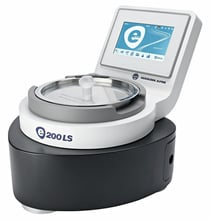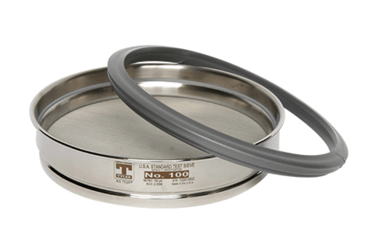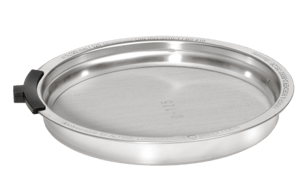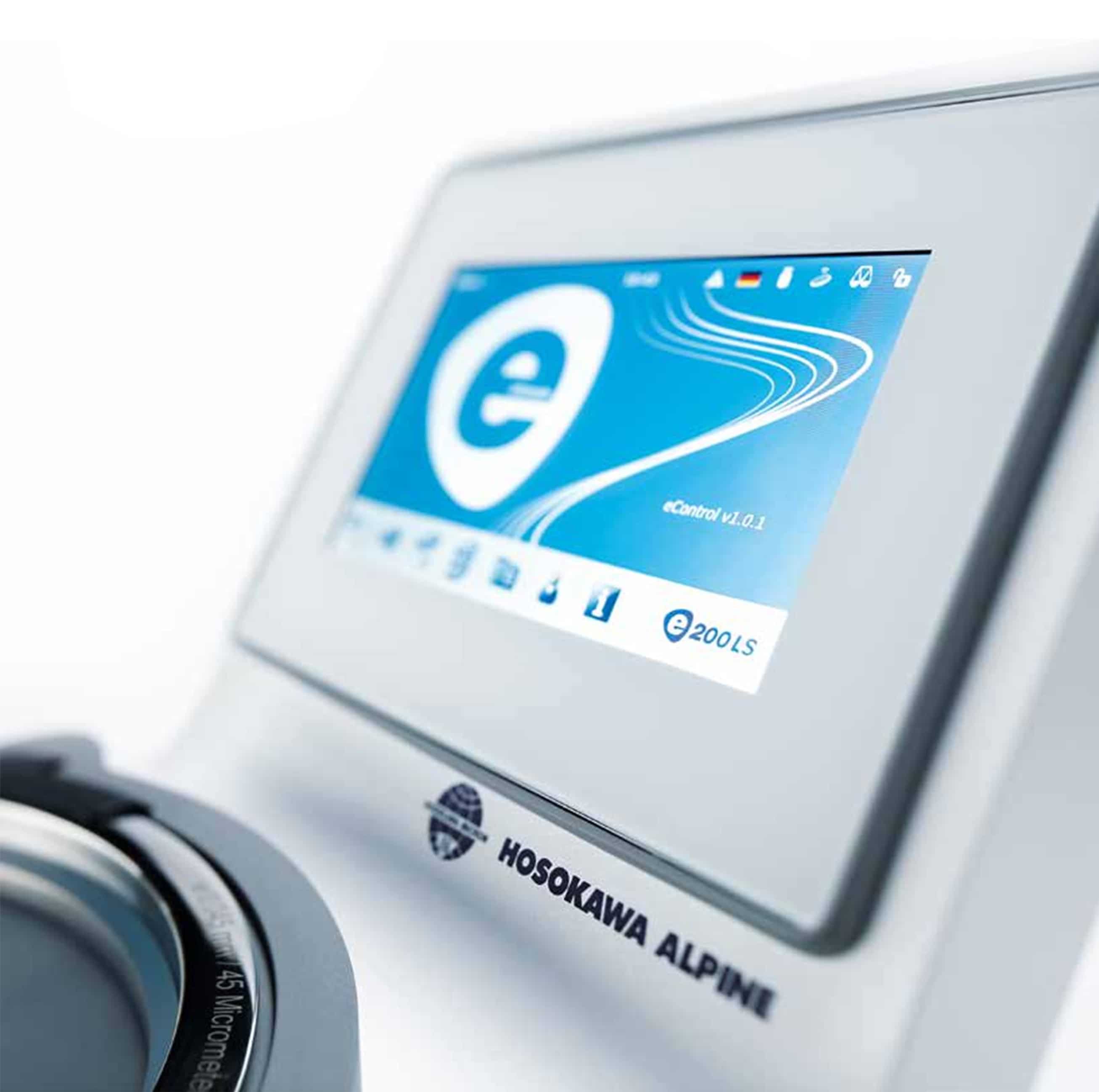How to Perform an Air Jet Sieve Analysis (Preparation, Process, and Maintenance)
Particle analysis is one of the most valuable elements of a quality control operation. It allows you to ensure that the materials you are handling meet the standards of the industry in which you work.
But what happens when you’re handling material that often becomes agglomerated and hard to run with traditional test sieves?
Such materials are easily analyzed with an Alpine Air Jet Sieve e200LS. The Alpine Air Jet Sieve is a device that uses air generated from a vacuum to propel air through a single sieve. This rush of air causes the agglomerated particle to collide with the plexiglass lid and separate.
W.S. Tyler’s team of experienced technicians have been trained to install and troubleshoot all aspects of the Alpine e200LS unit. They will provide on-site training and teach you how to properly use your equipment, best maintenance practices, and how to produce accurate results by avoiding common errors.

From cereal manufacturers to the pharmaceutical industry, we have seen this unit have tremendous success in a variety of applications.
This article will highlight the best practices when preparing you Air Jet Sieve e200LS, performing an analysis, and maintaining your equipment to keep it in pristine condition.
Preparing The Alpine Air Jet Sieve E200LS
Before you begin your Air Jet Sieve analysis, you must first understand that there are two ways in which you can carry out an Air Jet Sieve analysis: the traditional method and the Swiss method.
The main difference between the two is that the traditional method uses a single sample throughout the process, whereas the Swiss method uses one sample per sieve in the stack.
Prior to conducting either of the Air Jet Sieve methods, you must first gather a representative sample. To learn more about best practices for preparing a sample, refer to our article How to Prepare a Sample for Particle Size Testing.
You must also understand the duration in which you should run each sieve in the stack. This time is based on your particular industry standards. You can preset analysis protocols known as Standard Operating Procedures (SOP) into the unit itself.

This is extremely helpful if you are using standard test sieves with an adapter.

If you are using RFID sieves, the RFID chip works with the SOP to prevent you from running the test if the wrong sieve is in place. This dramatically reduces the chances of error.
Performing an Air Jet Sieve Analysis
Now it's time to determine which method works best for your operation. If you have a limited supply of material, the traditional method will be your best option as it requires the use of the sample throughout the process. On the other hand, if accuracy is your main concern, you will want to use the Swiss method as it is the most accurate of the two methods.
Traditional Method
- Place your finest meshed sieve into the Alpine Air Jet Sieve.
- Pour the entire representative sample onto the sieve. When pouring your sample, try to distribute the material as evenly as possible.
- Once the sample has been placed onto the sieve, put the lid onto the sieve then press the play button on the user interface to run your sample.
- Once the test is complete, your sample should be weighed and recorded.
- You can now transfer the same sample onto the next sieve in the sieve stack.
- Repeat this process until that sample has run through the sieve stack in its entirety.
Swiss Method
- Before you get started, ensure that you have one sample for every sieve in the stack. Each sample should be the same size and weight.
- Once you have gathered your representative samples, place one sample onto your finest meshed sieve.
- Once the sample has been placed onto the sieve, put the lid onto the sieve then press the play button on the user interface to run the sample.
- Once the test is complete, your sample should be weighed, recorded, then discarded.
- Repeat this process until you have run each sample.
Analyzing Your Sample
Typically, the purpose of an air jet sieve analysis is to determine the percentage of material that passed through each sieve and the weight of the retained material.
A scale can be linked to the Alpine Air Jet Sieve e200LS, allowing users to gather and store this information digitally after each test. This reduces the risk of recording or reading the results incorrectly.
Maintaining Your Air Jet Sieve Equipment
It is imperative that you clean and maintain your Alpine Air Jet e200LS unit. Doing so will prolong the lifespan of your equipment and ensure it continues to produce accurate, reliable results.
If elements of the unit become noticeably soiled or if you notice a loss in pressure, you will want to take action to avoid skewed results.
The Alpine Air Jet unit has sieve-cleaning functionality built-in. When using this auto cleaning function, you place the sieve over the air nozzle until the bound apertures are dislodged from the mesh.
As this is intended for minor cleanings, deep cleanings are necessary to keep the sieves in pristine condition.
If you are using the RFID sieves, the Alpine unit will keep track of how many times the sieve has been used. After a certain amount of uses have reached, the unit will notify you that sieve needs to be cleaned.
Operators should also make an effort to deep clean the unit itself. Keeping parts, such as the air nozzle and air pasture, clean will help ensure the unit continues to yield accurate results.
Air filter replacement is another aspect of Alpine Air Jet maintenance that is often overseen. The air filter in both the vacuum and the Alpine unit itself should be replaced on a regular schedule.
If you begin to notice a drop in pressure, checking the filters in the unit and vacuum should be your first step. If this doesn't remedy the issue, it may be time to purchase another vacuum.
Additionally, we recommend that you have your equipment calibrated annually unless industry standards state a more frequent schedule.
When its time to have your Alpine Air Jet Sieve calibrated, a W.S. Tyler technician will come into your facility, attach a manometer to your Alpine Air Jet equipment, and determine if the air pressure coming from the Alpine is within the acceptable tolerance standards.
After being calibrated, we provide a printed report stating that the unit has a professional certification and working as it should be.
Learn More About The Alpine Air Jet Sieve e200LS
The Alpine Air Jet e200LS is the perfect solution for companies that often encounter agglomerated materials.
If you have a limited supply of material, making use of a Traditional air jet sieve analysis will best suit your needs. Moreover, a Swiss air jet sieve analysis should be used if accuracy is of the utmost importance to your operation.
No matter which method you incorporate into your process, it is important that you use best cleaning practices on a regular basis. This will keep your equipment in tip-top shape.
With over 140 years of experience in the particle analysis industry, W.S. Tyler is here to help ensure you are using your equipment properly and yielding accurate results with each test.
For a more in-depth breakdown of the different Alpine Air Sieve e200LS options, refer to our Alpine Air Jet Sieve e200LS brochure.
For everything else particle analysis, feel free to explore our content catalog.
Want all the latest industry trends and innovations sent directly to your inbox? Subscribe to our monthly newsletters today.
About Ronnie Brown
Ronnie is the Content Writer for W.S. Tyler and has four years of experience as a professional writer. He strives to expand his knowledge on all things particle analysis and woven wire mesh to leverage his exceptional writing and graphic design skills, creating a one-of-a-kind experience for customers.




